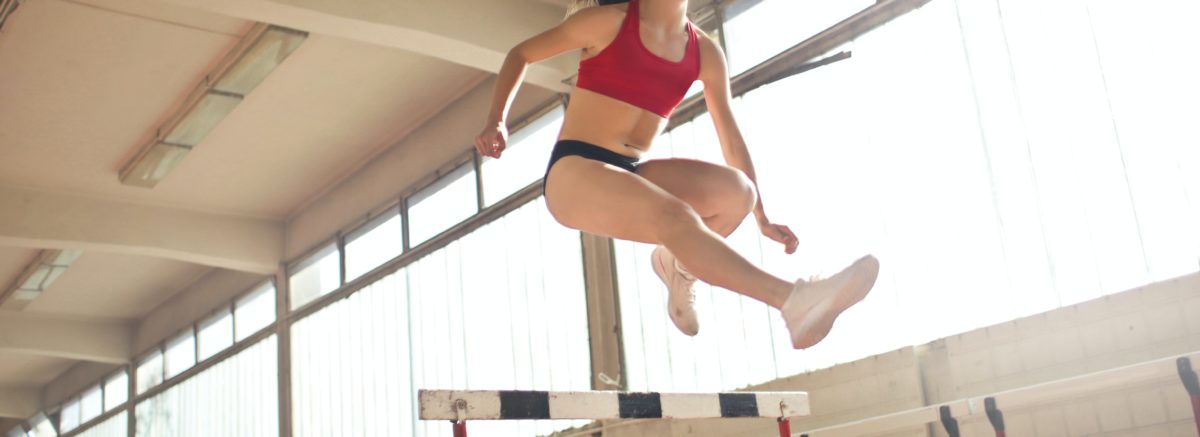Introduction
Women have been fantastic athletes for decades. Thanks to feminist movements and legal action, we are seeing women getting more and more involved in sport all over the world. Before Title IX (1972), only 1 in every 27 girls aged 14 to 18 played a sport. As of a 2010 report by the National Federation of State High School Association, now 1 in every 2.5 do. Female athletes of all ages are increasing around the world. And our society is becoming more accepting of women in sport – so what’s going on here? Why is the media not reflecting this shift?
The Media simply isn’t keeping up
Despite the massive increase in women jumping in the water and throwing on their cleats, the coverage of female athletes has not caught up. Aside from the once in four years, Olympic Games, female athletes are rarely seen on regular sports channels, magazines, or in the news. Less than 10% of televised sports news cover female athletes, and less than 2% of sports news cover females in typically masculinized sports (Koivula 1995). Despite the significant increase in women athletes, coverage of women’s sports took up only 1.4% of sports broadcast time (Messner et al., 2010).
In the brief coverage that female athletes receive, they are often sexualized and their athletic prowess overlooked. Young girls grow up never seeing strong, athletic women succeeding in their respective sports. Instead, they see a brief glimpse of sexualized women, often completely disassociated with the sport they are successful in. Why is this the case?
“Well, American society and media still think of men’s sports as more elite and exciting than women’s. This means that men’s sports are more profitable. Male athletes merely need to be good at their sports to get viewers,” says Hillary Adams, sports journalist at Paperfellows and Stateofwriting.
On the other hand, women’s sports are harder to market based off their athletic skills (although they are fantastic). To make an impact, the media has found that sexualizing female athletes makes money. Because of this, female athletes fall into this cycle of toxic sexualization in order to gain popularity and to succeed. You see this everywhere, from Sports Illustrated to advertisements on TV – athletes in bikinis (even though they aren’t swimmers) and scantily clad outfits. When was the last time you saw a strong woman on an advertisement performing her sport? Being commended for her athletic accomplishments? Sex sells, and when it comes to female athletes the media have absolutely turned this in their favor.
“Over-sexualization of female athletes is rampant everywhere. Try comparing women’s sand volleyball players’ uniforms to men’s sand volleyball. Let me give you a hint – it’s not the men performing in bikinis,” explains Rachel Gillmore, a writer at Boomessays and Uktopwriters.
The Effects of Bad Media on Young Female Athletes
In 2005, research by A. Colley highlighted the gender differences in young people’s ideas of sport. Kids and teenagers were asked to ‘draw a sportsperson’. The results speak volumes on how the media is disadvantaging women in their coverage. Young girls drew a mix of male and female figures. Older girls drew mostly males. And all of the boys drew male figures. The drawings of men were mostly of celebrities, male athletes they would see on TV. The only drawings of women were of their friends or themselves. Girls aren’t seeing role models represented as athletes on TV. Which means when they had to think of an athlete, all they could come up with were male.
Why Sexualization Of Female Athletes Is Happening
So we can see how this sexualization is rampant in the media, and how it’s affecting how we see these athletes. If we want to make any significant change, then we need to understand why this is happening.
There’s no denying that sexualization of women is rampant in the media as a whole. Why is gender a big part of women’s stories in comparison to men’s? When this is the case in the media, it’s not surprising that it’s happening to female athletes too.
Because of this attitude towards women in the media, a female athlete is not going to get the same respect that a male one would, even if they accomplish similar things. UK sports fans have been seeing this recently, as their England football team has been making great strides and winning events, especially where their male team hasn’t. Despite them getting better results, it’s clear that the male team is more respected.
How can we change these attitudes and get more respect for the women who work hard in their sports? Those working in sport say it’s best to start taking action at the local level. The onus is on the athletes initially. They must refuse the attention of the media if it leans into sexualizing them rather than examining their prowess.
Of course, those who are sports fans, or simply consume media in general, have their part to play too. We should call out and criticize sexualization when it happens, to shine a light on the problem. The more we make people aware of it and challenge the problem the more we can address it. This doesn’t mean that the problem will go away the instant we call it out. Rather, it will be a long road. As such, eventually we should start to see changes in the media.
We treat male athletes like athletes in the media – and rightfully so. It’s 2020! Why are we still seeing women pushed to the corners of sports coverage and treated like objects, not athletes? Women athletes deserve to have their sports highlights praised, not their outfits or relationships. We’ve come so far since Title IX was put in place in the 70’s. Media needs to wake up and start treating women athletes with respect, and give them the un-sexualized coverage they deserve.
About The Author

Jenny Han is young and responsible marketing strategist at Academized and Ukwritings. She works with a company’s marketing team in order to create a fully-functional site that accurately portrays the company. Jenny presents this information in a series of marketing proposals. You can find her works at Oxessays.
